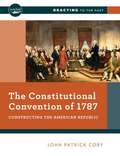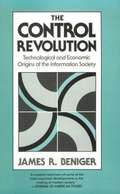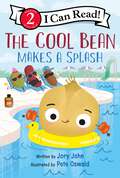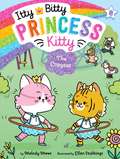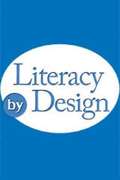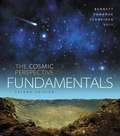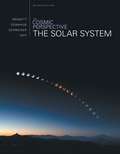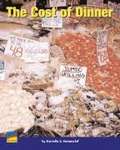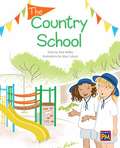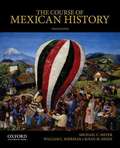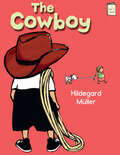- Table View
- List View
The Constitutional Convention of 1787: Constructing the American Republic (Reacting to the Past Series)
by John Patrick CobyA Norton original in the Reacting to the Past series, The Constitutional Convention of 1787: Constructing the American Republic brings to life the debates that most profoundly shaped American government. As representatives to the Convention, students must investigate the ideological arguments behind possible structures for a new government and create a new constitution. <p><p> Reacting to the Past is an award-winning series of immersive role-playing games that actively engage students in their own learning. Students assume the roles of historical characters and practice critical thinking, primary source analysis, and argument, both written and spoken. Reacting games are flexible enough to be used across the curriculum, from first-year general education classes and discussion sections of lecture classes to capstone experiences and honors programs.
The Contemporary Reader (Eleventh Edition)
by Gary J. GoshgarianA best-selling popular culture reader, The Contemporary Reader offers more than 70 readings taken from today's headlines to inspire students to write on topics that really matter to them. This collection offers over 70 current, well-written, provocative readings that students can relate to-readings that stimulate class discussion, critical thinking, and writing. Over 90% of the readings were written within the last five years. The text's nine tightly focused thematic chapters provide balanced readings with multiple perspectives on issues that students care about
The Contest (Fountas & Pinnell Classroom, Guided Reading)
by Stephen Krensky Debbie PalenNIMAC-sourced textbook. And the Winner Is… Tulip's big brothers are having a contest. Tulip thinks she can win. Her brothers laugh at her. But will they laugh when the contest is over?
The Control Revolution: Technological and Economic Origins of the Information Society
by James R. BenigerWhy do we find ourselves living in an Information Society? How did the collection, processing, and communication of information come to play an increasingly important role in advanced industrial countries relative to the roles of matter and energy? And why is this change recent―or is it? <P><P>James Beniger traces the origin of the Information Society to major economic and business crises of the past century. In the United States, applications of steam power in the early 1800s brought a dramatic rise in the speed, volume, and complexity of industrial processes, making them difficult to control. Scores of problems arose: fatal train wrecks, misplacement of freight cars for months at a time, loss of shipments, inability to maintain high rates of inventory turnover. Inevitably the Industrial Revolution, with its ballooning use of energy to drive material processes, required a corresponding growth in the exploitation of information: the Control Revolution. <P><P>Between the 1840s and the 1920s came most of the important information-processing and communication technologies still in use today: telegraphy, modern bureaucracy, rotary power printing, the postage stamp, paper money, typewriter, telephone, punch-card processing, motion pictures, radio, and television. Beniger shows that more recent developments in microprocessors, computers, and telecommunications are only a smooth continuation of this Control Revolution. Along the way he touches on many fascinating topics: why breakfast was invented, how trademarks came to be worth more than the companies that own them, why some employees wear uniforms, and whether time zones will always be necessary. <P><P>The book is impressive not only for the breadth of its scholarship but also for the subtlety and force of its argument. It will be welcomed by sociologists, economists, historians of science and technology, and all curious in general.
The Cookie (Fountas & Pinnell Classroom, Guided Reading Kindergarten)
by Stephen Krensky Giuliano FerriNIMAC-sourced textbook
The Cookie Thief: Independent Reading 11 (Reading Champion #504)
by Jenny JinksAmari has been baking cookies with his grandmother, but every time he leaves them to cool, they disappear! Who is the mysterious cookie thief? Amari is about to make a surprising discovery!Reading Champion offers independent reading books for children to practise and reinforce their developing reading skills.Fantastic, original stories are accompanied by engaging artwork and a reading activity. Each book has been carefully graded so that it can be matched to a child's reading ability, encouraging reading for pleasure.Independent Reading 11 stories are the perfect introduction to first chapter books for children aged 6+ who are reading at book band 11 in classroom reading lessons.
The Cool Bean Makes a Splash (I Can Read Level 2)
by Jory JohnThe Cool Bean faces the super slide in this Level Two I Can Read by the #1 New York Times bestselling duo Jory John and Pete Oswald!It's a perfect day at the community pool for a swim. The cool beans are the best swimmers in town. Check out how they dive! Look at how they cannonball! Watch how they backflip! YOW!As for the Cool Bean, the shallow side of the pool is the only side of the pool he treads water on. Until one day, the Cool Bean sees the super slide and finds the courage to finally ride the slide...or does he? Find out in this splashy story about taking chances, trying new things, and leaning on your friends.The Cool Bean Makes a Splash is a Level Two I Can Read book, geared for kids who read on their own but still need a little help. Whether shared at home or in a classroom, the engaging stories, longer sentences, and language play of Level Two books are proven to help kids take their next steps toward reading success.
The Cool Hat (Fountas & Pinnell Classroom, Guided Reading Grade 1)
by Randy DuBurke Pat McCannNIMAC-sourced textbook
The Copycat (Itty Bitty Princess Kitty #8)
by Melody MewsItty realizes that she has a copycat in this eighth Itty Bitty Princess Kitty chapter book.Itty meets a young tiger named Tessa and it turns out she goes to Itty&’s school! Itty thinks she&’s nice and funny, and she can tell Tessa likes hanging out with her and her friends. But then Tessa shows up wearing the same dress as Itty—the one Itty had told her about that is very special to her. And in art class, Tessa copies Itty&’s drawing. Itty doesn&’t understand why Tessa is being such a...copycat! Does she really want to be Itty&’s friend? Or does she just want to copy whatever Itty is doing? With easy-to-read language and illustrations on every page, the Itty Bitty Princess Kitty chapter books are perfect for emerging readers.
The Copycat Robot (Fountas & Pinnell Classroom, Guided Reading)
by Victor Tavares Sylvia AndrewsNIMAC-sourced textbook. TROUBLE! Why is a robot making a racket in Teri's closet?
The Cornerstone Anthology
by Alvin Granowsky Eden Force Eskin John DawkinsA language arts book that lets in the readers to a new world of literature and reading.
The Cornerstone: Continuing the Mission of Christ Today as Members of the Church
by Our Sunday VisitorThe Cornerstone: Continuing the Mission of Christ Today as Members of the Church, invites students to examine the nature and mission of the Church founded by Christ and guided by the Holy Spirit. Exercises engage adolescents in the images of the Church, documents of Church councils, and the Scriptural foundation of Church teachings. Maps and profiles of saints promote understanding of the spread of Christianity as well as important events and movements within the Church.
The Cosmic Perspective
by Jeffrey Bennett Mark Voit Nicholas Schneider Megan DonahueBuilding on a long tradition of effective pedagogy and comprehensive coverage, The Cosmic Perspective, Eighth Edition provides a thoroughly engaging and up-to-date introduction to astronomy for non-science majors. This text offers a wealth of features that enhance student understanding of the process of science and actively engage students in the learning process for key concepts. The fully updated Eighth Edition includes the latest scientific discoveries, revises several subjects based on our most current understanding of the cosmos, and now emphasizes deeper understanding of the twists and turns of the process of science and the relevance of concepts to student’s lives.
The Cosmic Perspective Fundamentals (Bennett Science And Math Titles Series)
by Jeffrey Bennett Mark Voit Nicholas Schneider Megan DonahueTeaching the Process of Science through Astronomy <P><P> Inspired by an activities-based classroom approach, The Cosmic Perspective Fundamentals is the briefest introduction to astronomy in the Bennett series. By focusing on the process of science and fundamental concepts of astronomy, The Cosmic Perspective Fundamentals allows time for the use of other instructional tools in the course. Each concisely written chapter is formatted into two main sections followed by a Process of Science section, making learning targeted and expectations clear for students. <P><P> The Second Edition of The Cosmic Perspective Fundamentals presents recent dramatic advances in astronomy and how they change our understanding of the cosmos. This new edition focuses on essential subjects of astronomy chosen for their importance to the field, interest, and engagement level, using goal-oriented lessons and practical tools to bring astronomy to life. The textbook is now supported in Mastering Astronomy to create an unrivalled learning suite for students and instructors.
The Cosmic Perspective: The Solar System
by Jeffrey Bennett Mark Voit Nicholas Schneider Megan DonahueThe text provides a wealth of features that enhance skill-building, including new group work exercises that help you retain concepts longer and build communication skills for the future. The Seventh Edition has also been fully updated to include the latest astronomical observations, results from recent space missions, research, and theoretical developments that inform our understanding of the early universe.
The Counselor and the Law: A Guide to Legal and Ethical Practice (6th Edition)
by Anne Marie Wheeler Burt BertramAttorney Wheeler, who has experience with counselors and the mental health field, and Bertram, a counselor, marriage and family therapist, and counselor educator, help counselors and other mental health professionals understand the legal and ethical dilemmas that can arise in practice. They overview the counseling profession, counseling relationship, and law and ethics, and discuss federal and state laws; civil malpractice liability and licensure board complaints; confidentiality, privilege, and privacy; duties to report, warn, or protect; suicide and threats of harm to self; professional boundaries; records and documentation; and managing the counseling practice. This edition has a new chapter on the use of social media and other Internet-related issues, updates to the Health Insurance Portability and Accountability Act (HIPAA) through the Health Information Technology for Economic and Clinical Health (HITECH) Act and regulations, a new legal/ethical decision-making model, and discussion of legal risks for counselor educators, such as recent court cases involving students' work with lesbian, gay, bisexual, and transgender clients.
The Courageous Sailor
by Alison Adams Lori O'Dea Marcin PiwowarskiA boy and his boat. Will today be the day Jose finally sets out in his boat? Or will he be too scared to go?
The Course of Mexican History (10th Edition)
by Michael C. Meyer Susan M. Deeds William L. ShermanMexico's political, social, and economic landscapes have shifted in very striking ways in recent years and the country now moves cautiously forward in the twenty-first century. Revised to address these remarkable transformations, The Course of Mexican History, now in its tenth edition, offersa completely up-to-date, lively, and engaging survey from the pre-Columbian times to the present. The leading textbook in its field, The Course of Mexican History, Tenth Edition, is indispensable for students of Mexican history, politics, economics, and culture.
The Cowboy (I Like to Read)
by Hildegard MullerAnna thinks the boy in the cowboy hat looks silly—but he's the only one who can save the day in this Guided Reading Level F story. It's a beautiful day! Anna and her toy dog, Toto, are all set to visit the beach, where the girl will teach her pup to swim. Toto is a quick learner, and Anna is having fun—until a wave pushes the floating toy far out into the ocean. No one knows how to save Toto—except for the boy in the cowboy hat, who leaps into action to lasso the wayward dog! Maybe he's not so silly after all. This richly-illustrated story about friendship and first impressions is perfect for young readers just beginning to tackle more complex sentence structures. The bright, charming artwork adds humorous detail—from Toto's tiny wheels to the Cowboy's aura of mystery—and helps support understanding of the text. The award-winning I Like to Read® series focuses on guided reading levels A through G, based upon Fountas and Pinnell standards. Acclaimed author-illustrators--including winners of Caldecott, Theodor Seuss Geisel, and Coretta Scott King honors—create original, high quality illustrations that support comprehension of simple text and are fun for kids to read with parents, teachers, or on their own! Level F books, for early first graders, feature longer, more varied sentences than Level E. Level F books encourage kids to decode new multi-syllable words in addition to recognizing sight words. Stories are more complex, and illustrations provide support and additional detail. When Level F is mastered, follow up with Level G.
